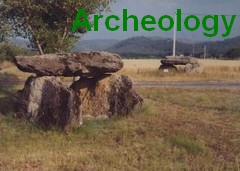
Prehistory Museum of Les Eyzies
 Aquitaine
Aquitaine

|

|
 Archeology, Natural Sciences Archeology, Natural Sciences |  |
Genius Tour Search Engine:
|
|
 The museum presents the history of man, from its emergence there are several million years to around 10,000 years before Christ. - The Paleolithic period is explained by the discoveries made on 7 different places: 1 located in Georgia and six others located in the Dordogne. - The visit allows you to switch from -400,000 to -10,000 years and explains you what climate change is occurring and how they contributed to the adaptation of the man. - The lifestyle of the cavemen is explained by reconstitution of scenes from daily life, and the first tools they used are presented. - The wild fauna is not forgotten: a skeleton of a bison or of a woolly rhinoceros are displayed. - You will see the reconstruction of the tomb found in Saint-Germain-la-Riviere, - Many collections of tools and instruments dedicated for manufacturing as well as jewelry are displayed.  1 rue du Musee 24620 Les Eyzies-de-Tayac Les Eyzies are located at 60km at the West of Brive-la-Gaillarde (from Brive, take the N89 for 25km, then the D62 for 1km, D704 for 9km, the D46 for 1 km and at last the D706 for 24km. The journey simply follows the valley of the Vezere). N 44°56'12'', E 01°01'05'' Click here to see the route (on a new tab)  |
 From one to two hours allow you to have a very interesting view of the museum. It is open: - From January to May: from 9:30 a.m. to 12:30 p.m. and from 2:00 p.m. to 5:30 p.m. daily except on Tuesdays , - In June: from 9:00 a.m. to 6:00 p.m. every day except on Tuesdays, - In July and August: from 9:30 a.m. to 6:00 p.m. daily, - In September: from 9:00 a.m. to 6:00 p.m. every day except on Tuesdays, - From October to December: from 9:30 a.m. to 12:30 p.m. and from 2:00 p.m. to 5:30 p.m. daily except on Tuesdays. Schedules and opening days may vary during bank holidays. Free for Youth of the European Union aged 18 to 25 years old. Disclaimer : The management team of the destination has the possibility to change the opening days and hours without prior communication.  The museum aims to give you a more accurate understanding of the lives of prehistoric humans (Neanderthals, Homo erectus) and to do it gathers an impressive collection. |